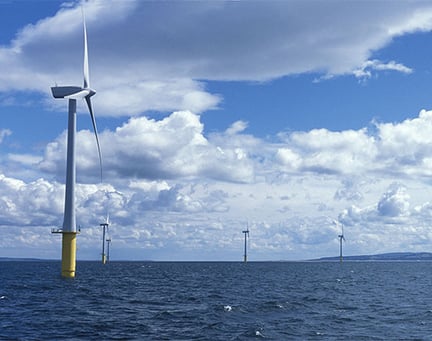The world needs more renewable energy sources urgently, and knowing how a new wind farm will truly perform is vital before it gets off the ground.
Compared with Europe, the wind industry in South Africa is a relative newcomer. Large-scale deployment of wind energy only became part of government policy in 2010. Since then, 25 wind farms have been introduced, together generating over 2.4 GW (enough to power more than 1.5 million homes). However, as per the recently released IRP, it is proposed that the South African Government will support a further 14.4 GW to be installed by 2030.
Having operational performance data on the country's wind farms is useful as a 'feedback loop'. Having gained consensus and input from stakeholders across the industry, it has enabled us to review the accuracy of pre-construction yield assessments used for financing projects in 2012 and then identify and correct previous errors.
To date, there is no single global approach to determining the value of a proposed wind farm (an international standard, IEC 61400-15, is being developed). The viability of each wind farm depends on the revenue generated by producing and selling energy. This energy comes from turbines rotated by the wind, making wind resource assessment fundamental. European based approaches have been adopted and adapted rapidly over recent times. Steps involve analysing on-site measured data and conducting a long-term wind resource assessment, wind flow modelling and loss and uncertainty assessments.
What does our study find?
First, that the wind farms - six of eight of the country's first round (244 wind turbines) - are performing in line with internationally reported levels of wind farm availability. Secondly, that pre-construction yield assessments were ambitious. On average in 2012, yields were over-predicted by 4.9%; an industry trend back then. Over time, assessments have become more accurate; a 2018 assessment would result in an over-prediction of 1.4% - a significant improvement on six years ago. The two largest causes for the 2012 discrepancy were errors in the wind-flow modelling (wake modelling bias) and failing to adjust for wind speed changes over the long term, basing this rather on short-term measurements taken on site.
How does our study help?
By carrying out the country's first detailed review of wind resource assessments, owners of wind farms can now benchmark their project performance. Investors in new South African wind farms will be more confident about yield predictions. And specialists can improve on wind resource assessment approaches, refining their calculations. All this will support greater numbers of wind farms not just in South Africa as part of the IRP process, but regions with a similar climate, from other parts of Africa to the US and Australia.
The study was conducted by five of our renewable energy specialists and published in the Journal of Energy in Southern Africa.
It was made possible by the wind farm operators who kindly supplied their time and data.
Location of 'Round 1' wind farms

Breakdown of the main causes of 2012 assessment errors







